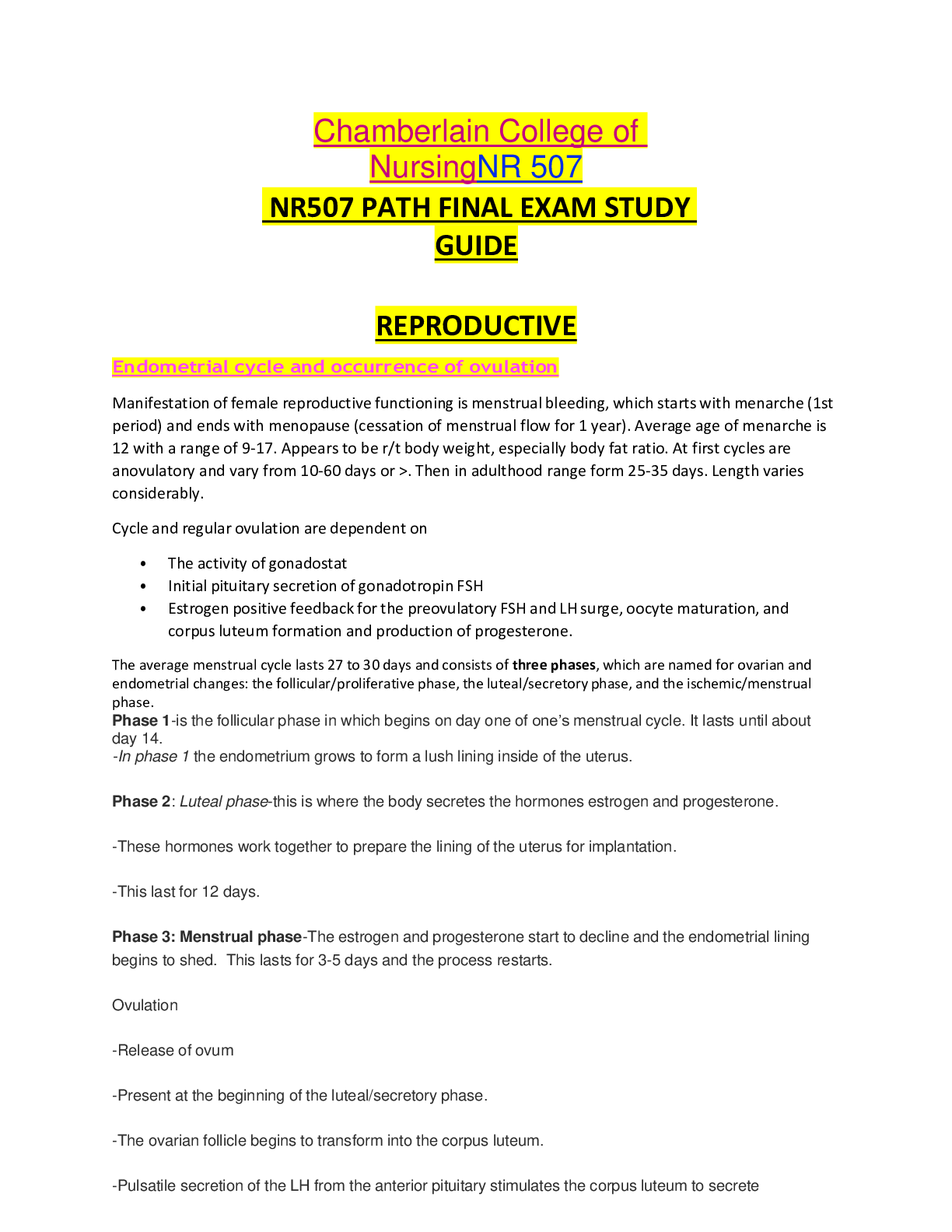*NURSING > STUDY GUIDE > NURS 190 PA FINAL Exam Study Guide, Latest 2020. (All)
NURS 190 PA FINAL Exam Study Guide, Latest 2020.
Document Content and Description Below
NURS 190 PA FINAL Exam Study Guide, Latest 2020.________________________________________ Inspection technique (3): ● FIRST technique with general survey ● General survey: ○ Observing mobil... ity / gait, physical appearance, general wellness/health, mood & behavior (facial expressions, interactions), mental status (observing patient’s body language and response when asking questions) ● Do it the SAME WAY every time → less likely to forget something ● Do not rush it, especially with anxious patients ○ Make sure the patient is comfortable ○ Temperature in the room is suitable for the patient ● Make sure that you have everything that you need → so that the patient has confidence in you ● Know normal vs abnormal when surveying appearance & symmetry ○ Compare ANYTHING that has a pair ○ Eyes- level, equal, is there eyelid drooping? ○ Smile- is there a droop? ○ Always compare the two sides to ensure that there is no abnormality between the two sides ● Listen for natural sounds ○ Abnormal sounds: wheezing, labored breathing, crepitus during ROM ● Detect abnormal odors: ○ CDIFF, alcohol on a patient, acetone / sugary breath ● Try not to assume anything ! → use critical thinking! ○ Ex: someone with low blood sugar or issues with hypoxia can appear intoxicated ● Know your normal values: ○ Blood pressure, HR, RR, O2 sats, temperature ○ For each age levels ■ Infants: must faster RR than elderly ________________________________________ Percussion technique (3) ● Types: ○ Direct percussion- tapping body with fingertips of dominant hand ■ For a small infant → direct percussion on the chest ■ Adult → on the sinuses on the face ○ Blunt percussion- place palm of nondominant hand flat against the surface and strike it with closed-fist dominant hand ■ Used to assess the kidneys → assessing for pain / tenderness (UTI) ○ Indirect percussion- most commonly used ■ Plexor = hammer or tapping finger ■ Pleximeter = device or surface that accepts the tap ● Sounds: ○ Intensity of amplitude: softness or loudness ○ Pitch or frequency: high or low (vibrations per second) ○ Duration: length of time ○ Quality: recognizable overtones or drumlike sounds ● Tympany- sound heard over stomach or intestines ○ Loud, high-pitched, drum-like tone ● Resonance- normal sound heard over lungs ○ Loud, low-pitched, hollow tone ● Hyperresonance- air trapped in lungs ○ Abnormally loud, low tone of longer duration than resonance ■ COPD, trauma or lung collapse ● Dullness- over solid body organs (liver) ○ High-pitched tone, soft and short ● Flatness- over solid tissue, muscle, or bone ○ High-pitched tone, very soft & shorter than dullness ■ Ex: ribs [Show More]
Last updated: 1 year ago
Preview 1 out of 45 pages
Instant download
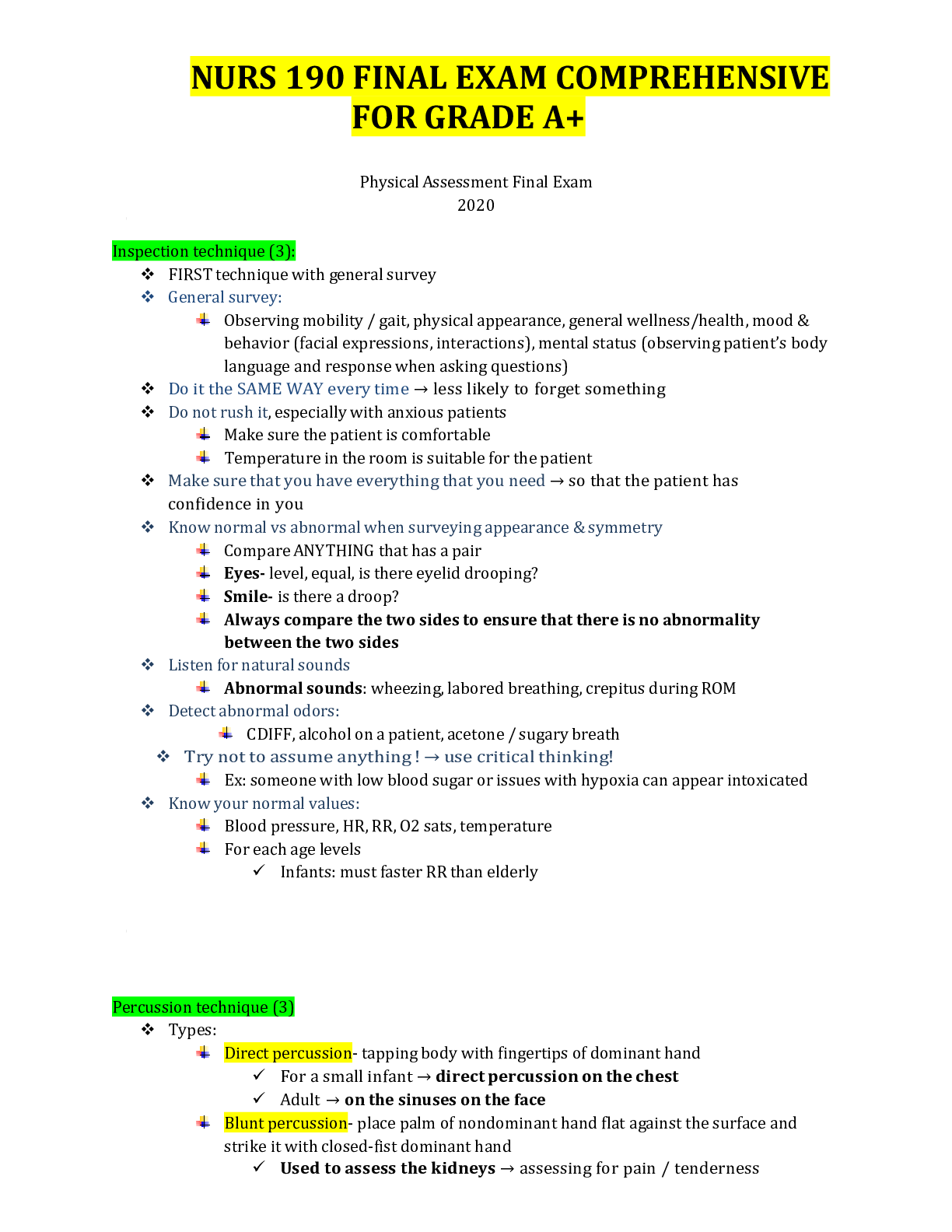
Buy this document to get the full access instantly
Instant Download Access after purchase
Add to cartInstant download
Reviews( 0 )
Document information
Connected school, study & course
About the document
Uploaded On
Nov 19, 2020
Number of pages
45
Written in
Additional information
This document has been written for:
Uploaded
Nov 19, 2020
Downloads
0
Views
29


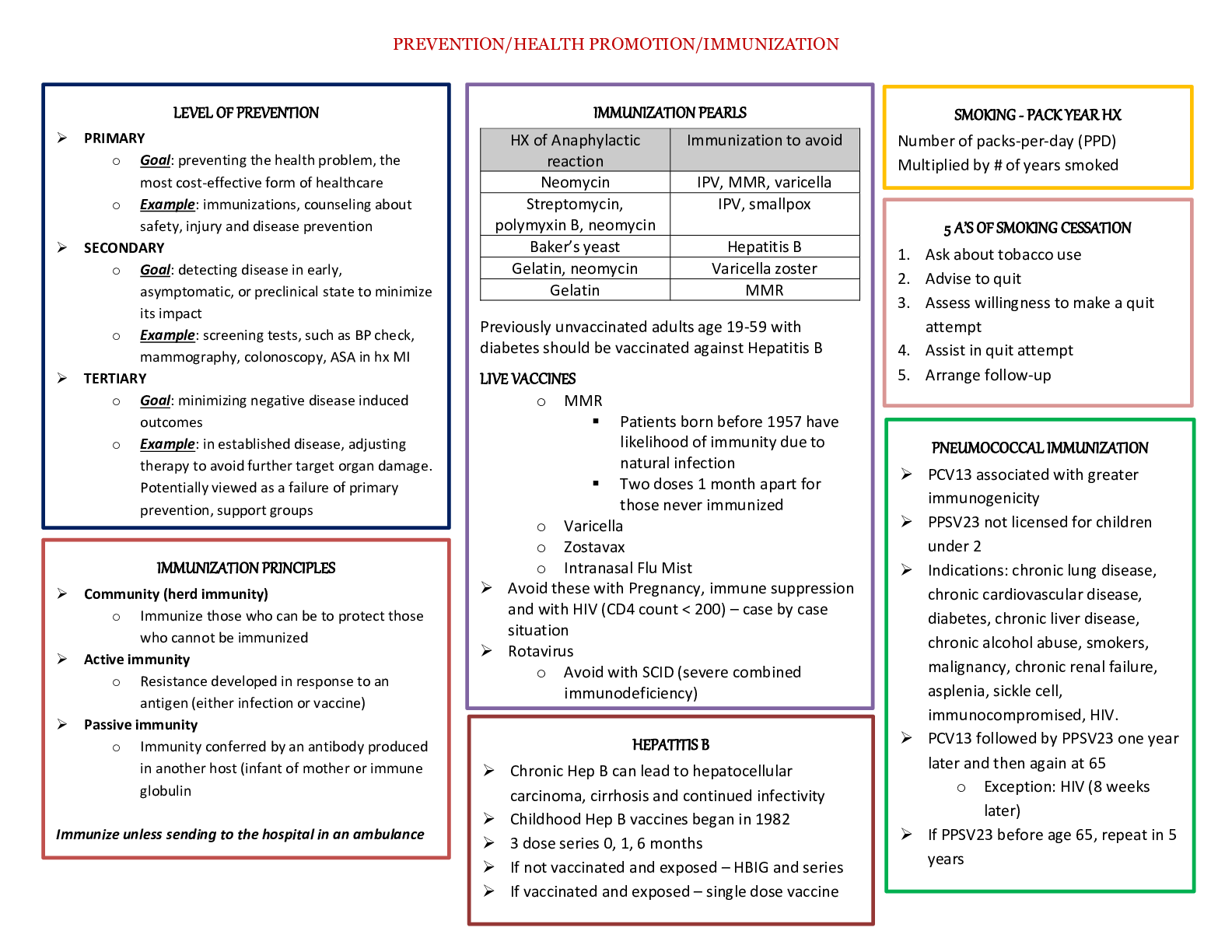
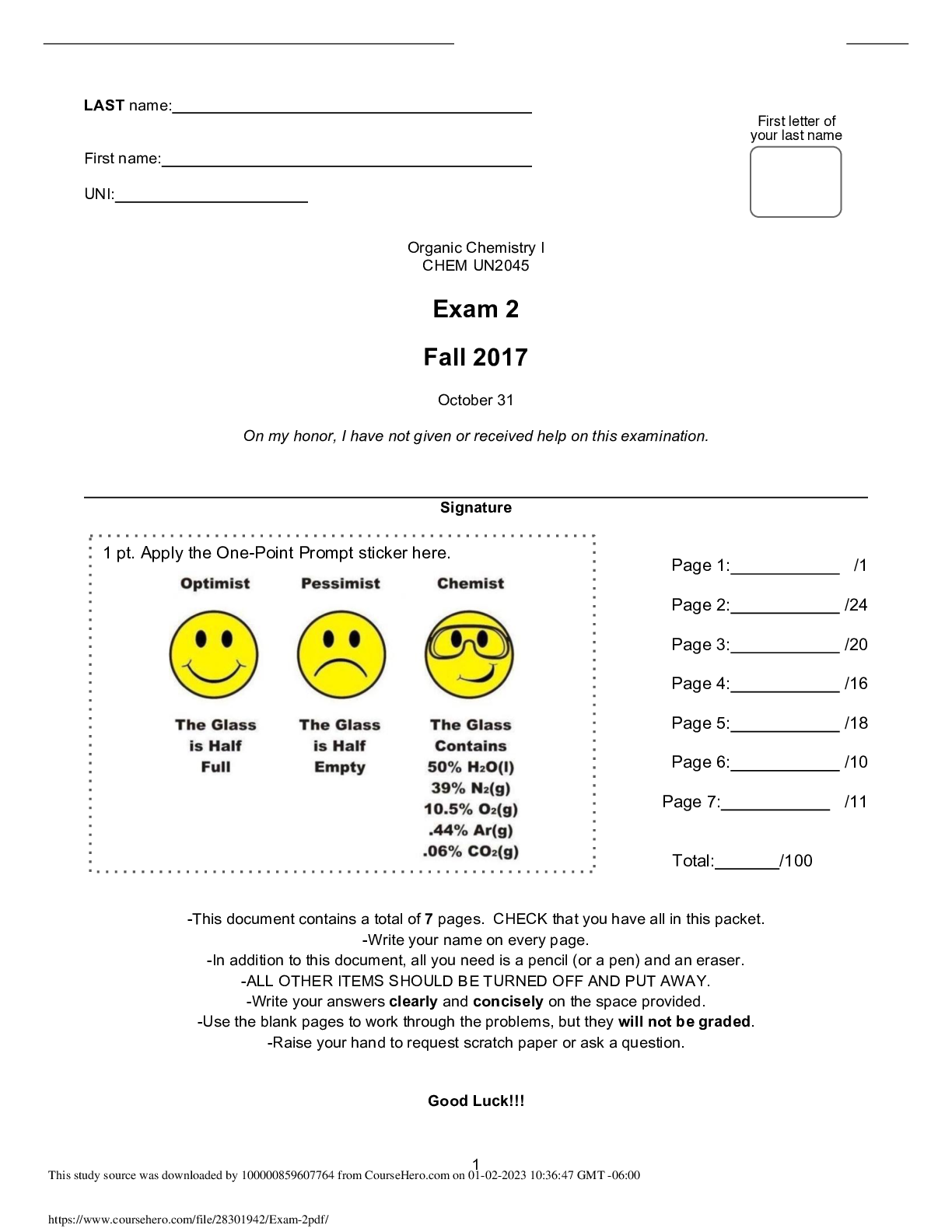

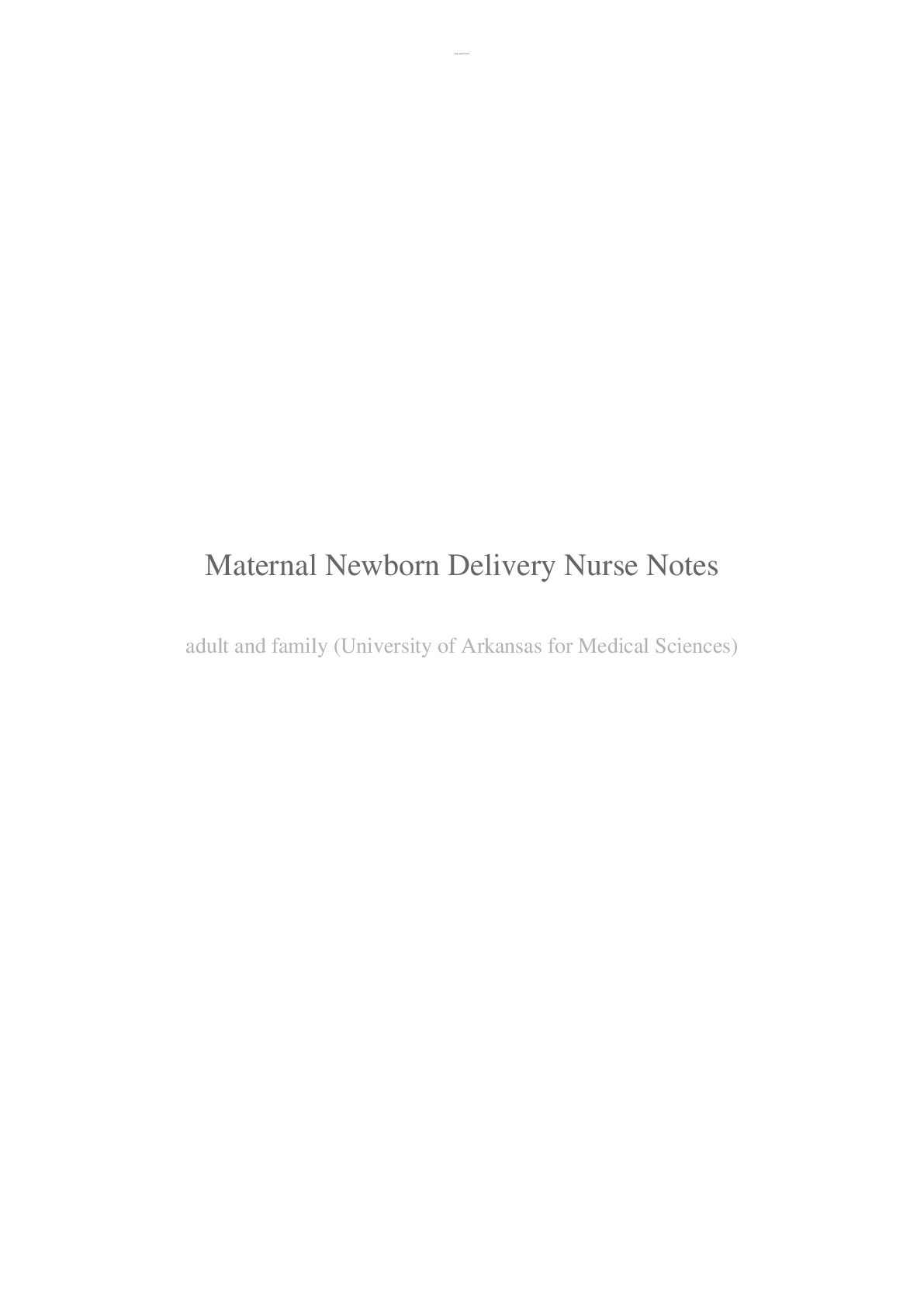


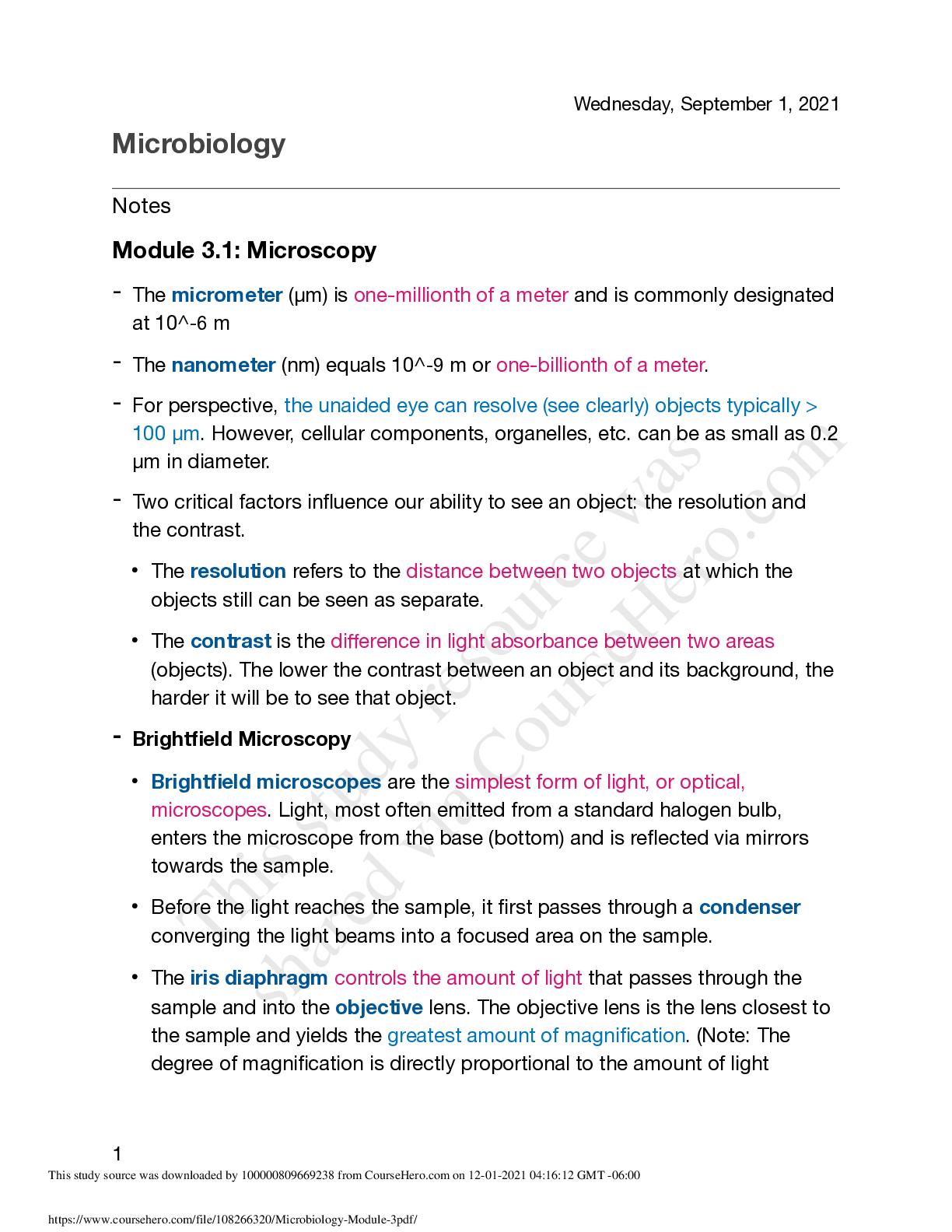



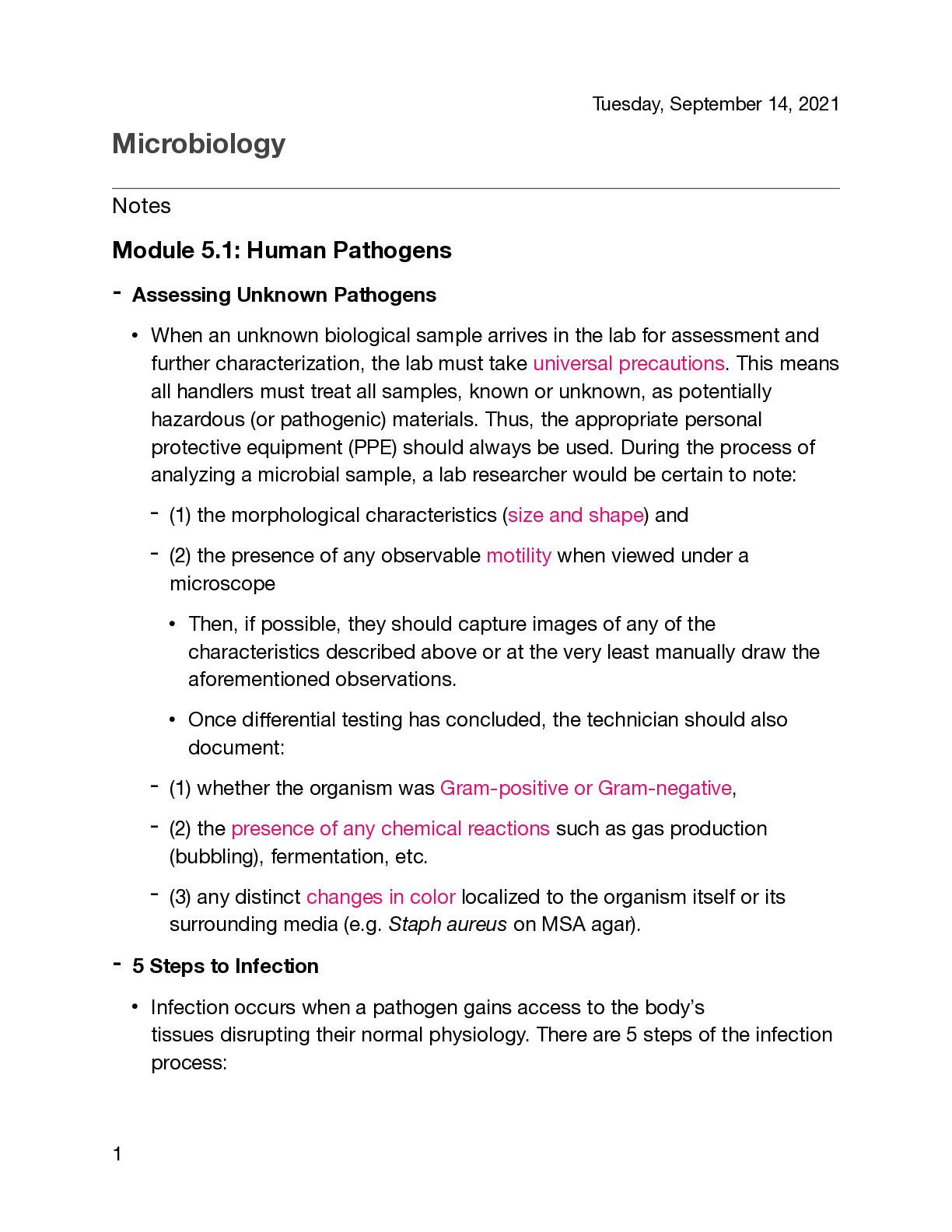
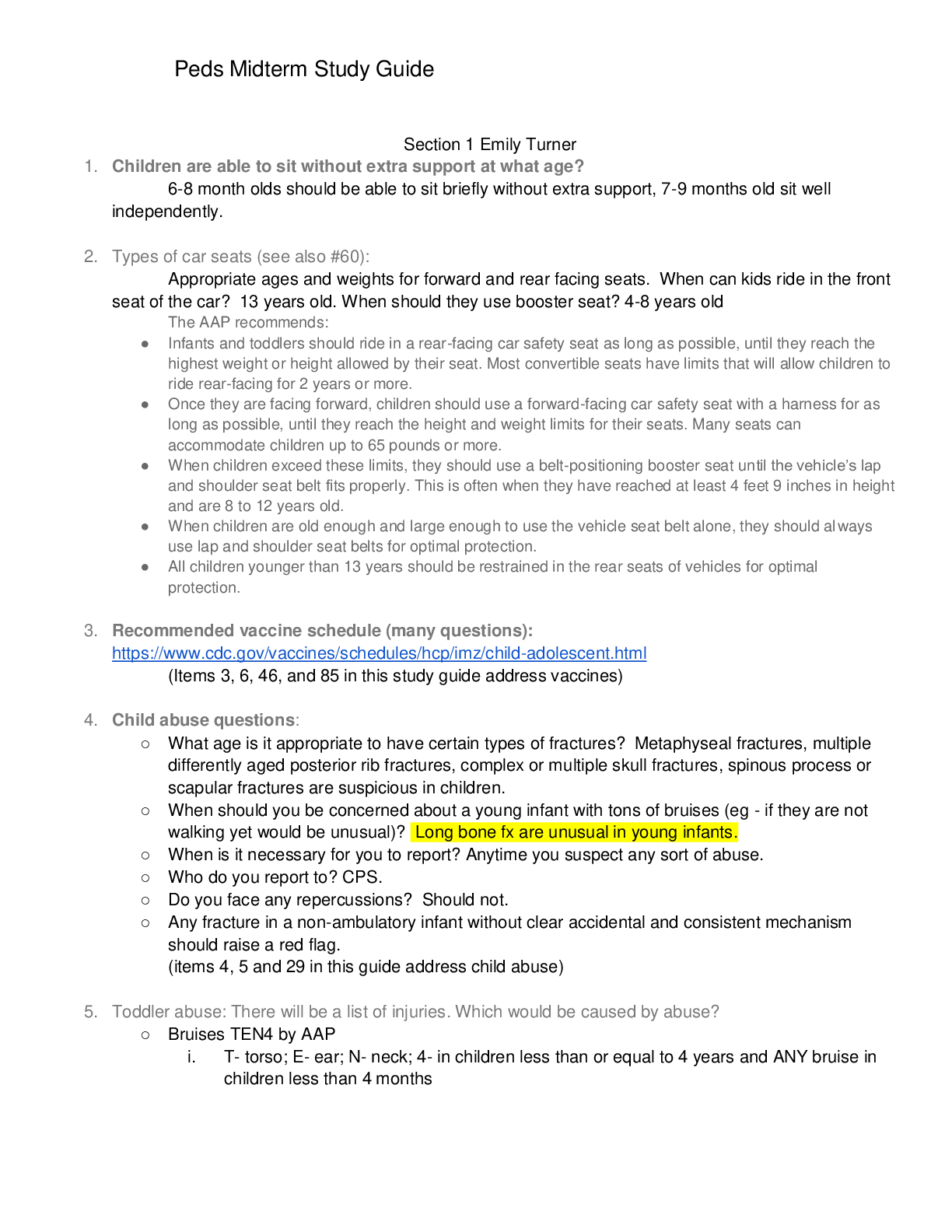

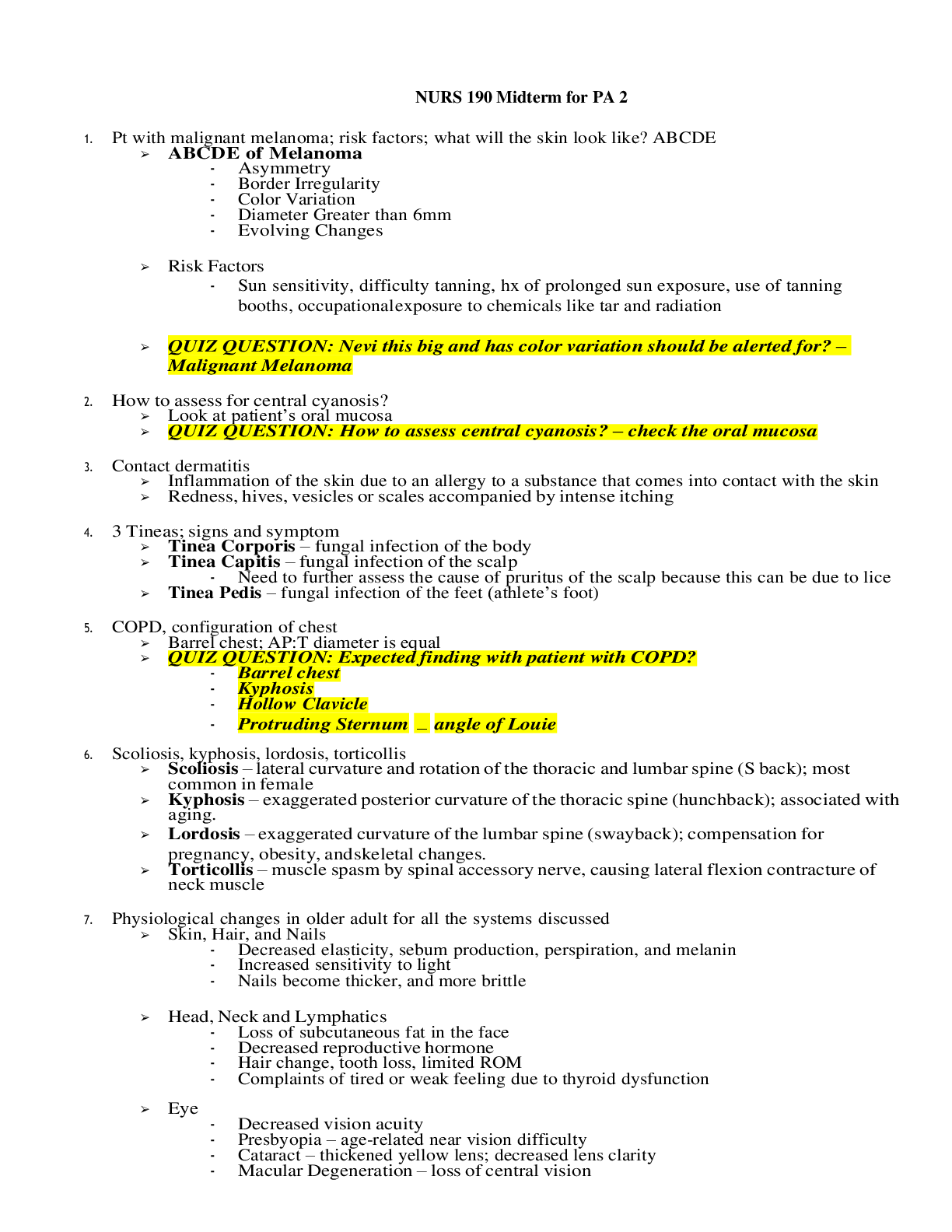
.png)

.png)
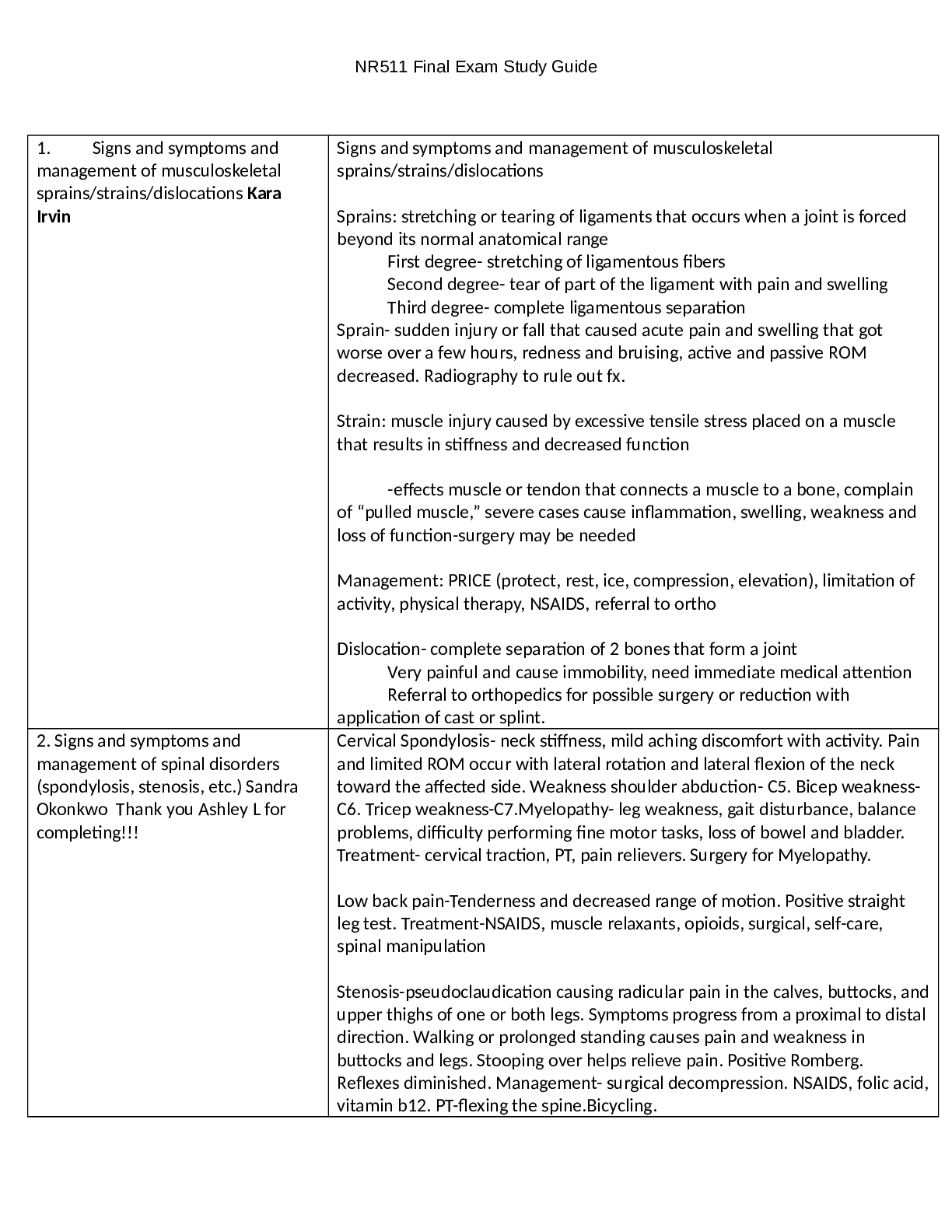
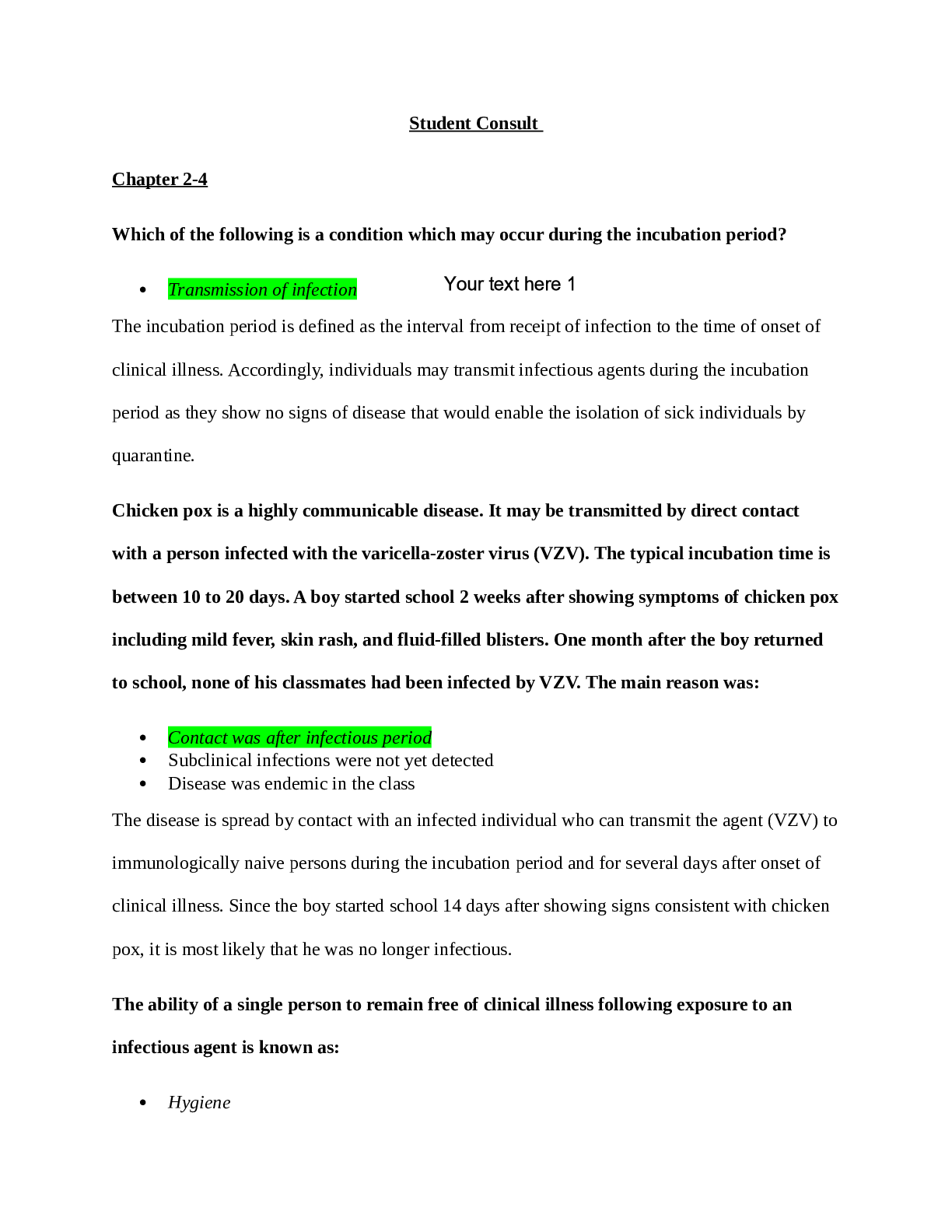
.png)
